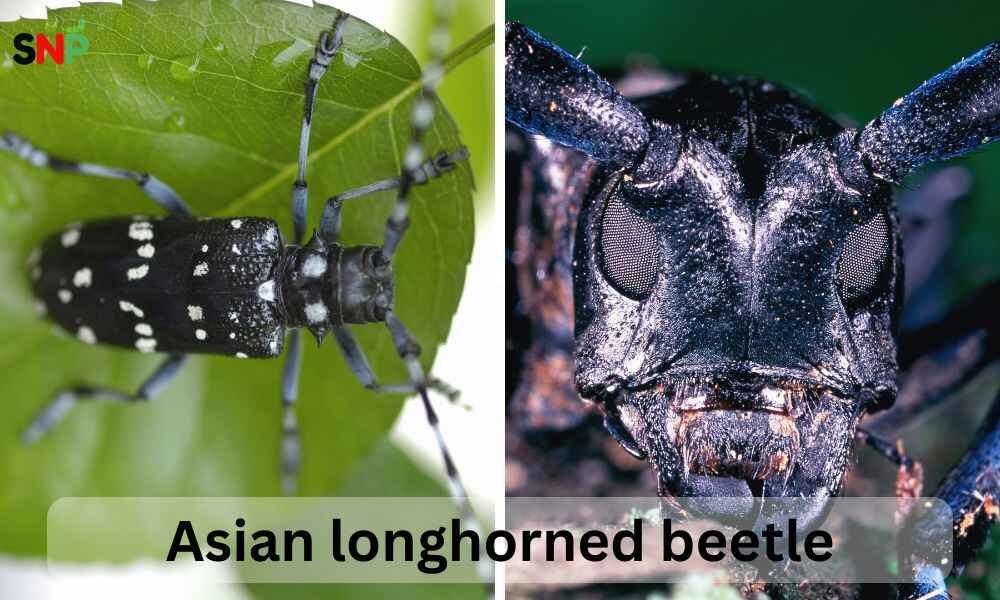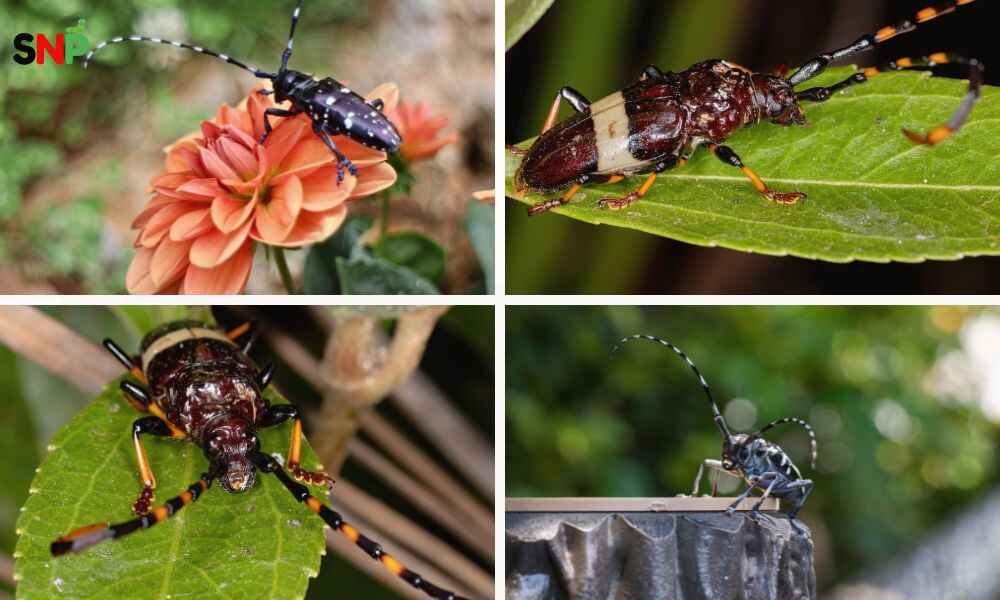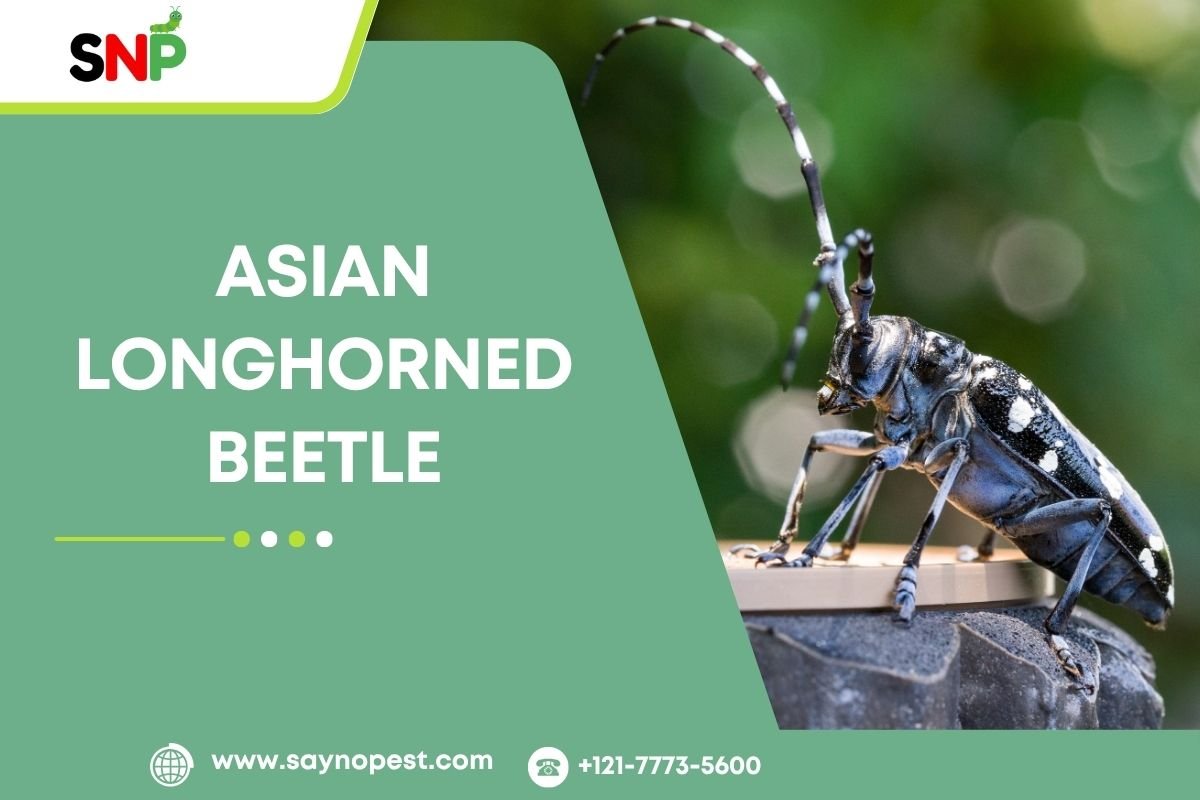Unmistakably beautiful but deadly, the Asian longhorned beetle became the talk of the town among arborists and homeowners in the U.S. over its unintentional destruction of hardwood trees. Known for their shiny black body with white spots and very long bands of antennae, these beetles are no longer just interesting to look at; they are the major pests in the fight against American hardwoods and urban forests. This article aims to give a picture of who the Asian beetle is, identify the Asian longhorned beetle larvae, show the similarities and differences between the these and other look a like species, and finally clear up any doubts caused by the question, ‘Does the Asian longhorned beetle bite?’
What Are Asian Longhorned Beetles?
The Asian longhorned beetle is a foreign pest that is mainly found in wood-boring beetles in East Asia, mainly China, Korea, and Japan. They also found in North America. It is a major problem since the pest has done a lot of damage to various types of hardwood trees. Adult beetles measure 20 to 35 millimeters in length, and are very conspicuous owing to their jet-black bodies, white spots, and also by their funny antennae, which are sometimes even twice as long as the bodies. The incursion of them in the United States has resulted in the death of millions of trees and has forced the government to initiate several measures.

Moreover, the life cycle of the insect is reliant on its host trees. Females make small holes in the bark to lay their eggs, and multiple eggs can laid by one female. Those eggs will develop into grubs that start the most harmful stage of the beetle’s life.
Asian Longhorned Beetle Larvae: The Hidden Destroyers
The Asian longhorned beetle larvae are the very characteristics behind the disaster trigger by this insect. The larvae have a color of cream or yellow, and they can become 50 millimeters (approximately 2 inches) in length. Once born, the Asian longhorned beetle larvae burrow deeply into the wood, gorging on the tree’s inner tissues. Growing thus, they make a wide network of the tree’s tissues wherein they run and at last, kill the tree.
The growth of the Asian longhorned beetle larvae is a process involving many steps, or instars, and it can take from one to two years depending on the weather. Through this period, the larvae spend the winter inside the tree; thus, detection and control become hard. Besides, the infestation of the insect can be identify by sawdust-like frass near the tree base, oval exit holes, and oozing sap. If you spot these signs, likely, the Asian longhorned beetle larvae are there.
Asian Longhorn Beetle Look Alike
Several native beetles and insects can be mistaken for the Asian longhorned , thus making it imperative to have an accurate identification in order to able to carry out efficient pest management. Some common Asian longhorn beetle look alike species that are known to are the whitespot sawyer, northeastern sawyer, eyed click beetle, and brown prionid. While these insects may share similar size, coloration, or long antennae, there are key differences:
- The Asian longhorned is sheeny black in color with a few white marks and antennae that are stripe in black and white.
- The white spotted sawyer, a widespread Asian longhorn beetle look alike, is much drabber in color, with a white scutellum (the small space between the base of the wings), and lacks the beetle template spots.
- In addition to these, other Asian longhorn beetle look-alike species exist, such as the eyed click beetle or brown prionid, which cannot confused with the body shape, color, and markings on the antennae.
In addition to that, upon getting a sight of the Asian longhorned, one has to quite particular whilst viewing it up close to avoid mixing it up with other beetles that look alike, particularly if it is believed that the region has been infested by pests.
Asian Longhorned Beetle Bite

The number of individuals speculating whether the Asian longhorned has the ability to bite them is very high. Although these beetles bite and their jaws are strong, an Asian longhorned beetle bite is not deem dangerous to humans in any form. They are very docile and may only bite when they are mishandle or when they perceive danger. Nevertheless, the bite of an Asian longhorned beetle may confused with a sting or some small spot of pain, where the localized pain tends to vanish after the first day or two. There is no poison involve , and the ‘Asian longhorned beetle bite‘ doesn’t become a considerable medical problem except in the case of an allergic reaction.
Conclusion
The Asian longhorned is a very harmful pest that is able to destroy the health. Its larvae, lurking far inside the wood, can work undetected and fatally injure even those trees that are in perfect health. It is very important to differentiate the Asian longhorned from the Asian longhorn beetle look-alike species through some features for being able to detect the act early and take measures to keep it under control. Even though the chance of getting an Asian longhorned beetle bite is very limit, the role of this pest in the havoc caused both ecologically and economically is still massive.
If, in case, you think that the these has invaded your home or spot signs of its presence or its larvae, immediately seek assistance from pest control professionals in your locality. A rapid response is the only way it can guarantee that the area will not be infest further, and also be at a position of saving the trees to the future generation. Make sure you are aware and take action in preventing the Asian longhorned beetle menace in our woods.
